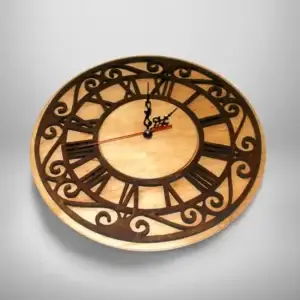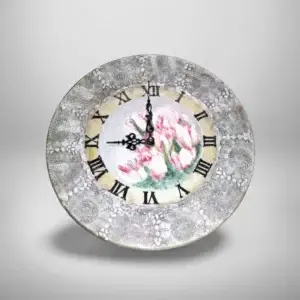The history and development of clocks
Clocks have been essential time-measuring instruments for humanity for thousands of years, helping to organise daily life and support the advancement of science. Their development reflects the growth of technology and the skills of master craftsmen throughout history.
The beginnings of timekeeping and the first clocks
The first time-measuring instruments were sundials, used in ancient Egypt around 3500 BC. These devices measured time based on the movement of shadows. Since sundials did not work at night or during cloudy weather, water clocks were invented around 1500 BC. Water flowed from one container to another, measuring intervals of time.
Hourglasses were also used to measure time and were especially useful for recording shorter periods, such as the duration of speeches and exams. Hourglasses were popular from the Middle Ages until the 19th century.
The arrival of mechanical clocks
Mechanical clocks appeared in Europe in the 13th century, using gravity-driven mechanisms. The first tower clocks had no faces and announced the time with chimes. For example, one of the first dialed tower clocks was installed at Westminster Abbey in 1288.
In later centuries, pocket watches developed, followed by wristwatches, which became particularly popular in the early 20th century. Quartz clocks, which use a quartz resonator to measure precise time, became widespread in the second half of the 20th century. Today, the most accurate timepieces are atomic clocks, which measure time based on the vibration of atoms.
Types of clocks
Over the years, various types of clocks have emerged:
Sundials – measure time using the movement of shadows.
Water clocks – use the flow of water to measure time.
Hourglasses – allow fixed time intervals to be recorded.
Mechanical clocks – operate using gears and springs.
Quartz clocks – use a quartz resonator to measure accurate time.
Atomic clocks – the most precise clocks, based on atomic vibrations.
Mass-produced vs. handcrafted clocks
Mass-produced clocks are generally cheaper and more widely available due to large-scale standardised production processes. Handcrafted clocks, on the other hand, are unique, often of higher quality, and reflect the personal skill and creativity of the artisan. Handmade clocks may also be more expensive, considering the time and effort involved in their creation.
Renowned craftsmen and clockmaking countries
Switzerland is known for its watchmaking traditions and has been home to many world-famous clockmakers. For example, in 1833 Antoine LeCoultre founded the company Jaeger-LeCoultre, renowned for innovations in miniaturising clock mechanisms. Other notable watchmakers include Patek Philippe, Rolex, and Audemars Piguet, all recognised for their master craftsmanship and innovation.
Units of time and their definition
Time units such as the hour, minute, and second originate from ancient Babylon, where the sexagesimal system was used. Before the invention of accurate clocks, time was measured using natural phenomena, such as the movement of the sun, dividing the day into periods of light and darkness. For more precise time intervals, water clocks were used, which allowed the measurement of both shorter and longer periods.
Sources:
Clock – Wikipedia
The history of clocks – Wikipedia
Handbell – Wikipedia
Jeweller – Wikipedia
Goldsmith – Wikipedia
Watchmaker – Wikipedia
The history of time – Digar.ee
The history of clocks – FashionTimeBalife


